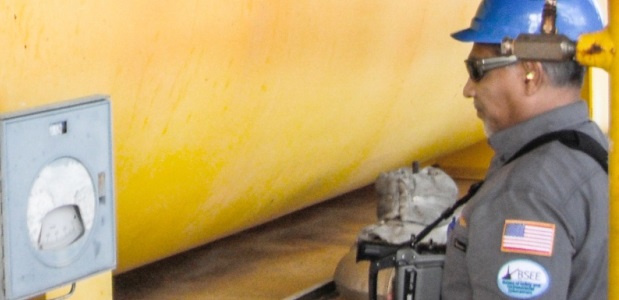
BSEE Publishes Gas Release Alert After Two-Day Gulf Inspection Blitz
The two-day BSEE inspection blitz showed that 17 percent of the facilities had documented oil or gas accumulation and 22 percent "had a non-operable gas detector, no process implemented for calibrating devices, failed a bump test, or had no documentation on the frequency and/or results of inspections."
The federal Bureau of Safety and Environmental Enforcement released a Safety Alert on Jan. 5 about gas hazards on production platforms in the Gulf of Mexico. The alert highlights findings of BSEE's Gulf of Mexico-wide inspection effort under its Performance-Based Risk Inspection pilot, along with recommendations that operators develop and implement daily and weekly inspection protocols to check for common gas release hazards based on incident data.
During the inspection period, 31 gas releases were reported to the bureau by 14 operators, and the bureau issued 36 gas release incidents of non-compliance, causing BSEE to develop a protocol to conduct two days of targeted inspections of gas releases on 26 platforms and 10 well operations in the Gulf. BSEE inspectors used hand-held gas detectors, thermal cameras, and infrared thermometers to conduct the gas release inspections.
The inspection blitz showed that 17 percent of the facilities had documented oil or gas accumulation and 22 percent "had a non-operable gas detector, no process implemented for calibrating devices, failed a bump test, or had no documentation on the frequency and/or results of inspections." There were no excessive temperature issues identified by BSEE staff, and only one facility had an outdated electrical drawing, but "very few facilities" had warning signs to address area classification, the alert said. It said the inspections "suggest that operators' safe work practices do not fully cover pressurized welding enclosures, and are not readily available to offshore personnel. Bridging documents with contractors need to be evaluated to ensure personnel are fulfilling their obligations."
One day before the alert was issued, U.S. Interior Secretary Ryan Zinke announced the Trump administration plans to open more than 90 percent of the U.S. Outer Continental Shelf to eventual oil and gas production, including 12 new potential lease sales in the Gulf of Mexico.
BSEE acted following a 2016 review of its oversight of offshore oil and gas operations by the Government Accountability Office, which found that BSEE had been unsuccessful in implementing a risk-based inspection component as part of its inspection program. New BSEE Director Scott Angelle instructed Gulf of Mexico regional staff to complete the pilot with the goal that risk-based inspections implementation would become a reality in 2018.
"There are great safety benefits to having a full cadre of inspection protocols to manage operational risk," Angelle said. "I saw the critical need for the smart tools necessary to ensure an effective inspection strategy and this protocol helps deliver added safety for all offshore operators."
"With the data we are capturing, it makes sense for us to analyze the information and look for opportunities to improve safety," added Lars Herbst, BSEE Gulf of Mexico Region director. "Because gas releases can be significant safety risks, BSEE selected those incidents, developed a protocol for those inspections and conducted those targeted inspections during the pilot."
The risk-based inspection protocol will be integrated into BSEE's overall inspection strategy, with the first risk-based inspection scheduled for the second quarter of 2018.